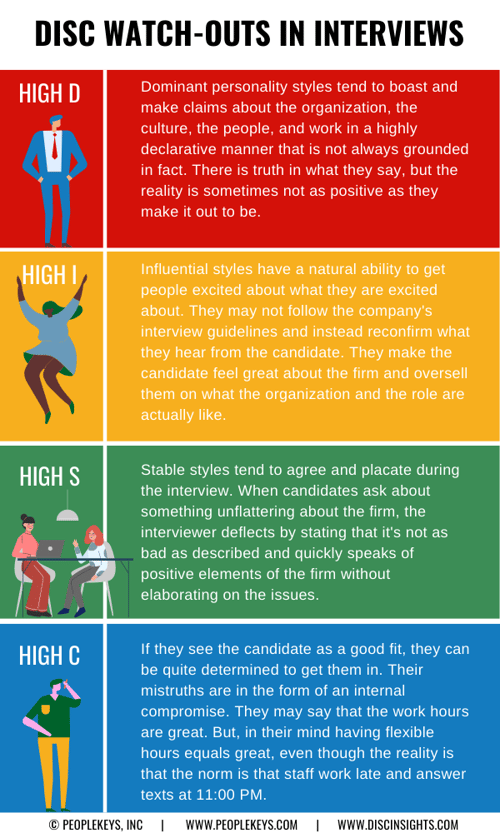
Mitigating Company Half-Truths When Speaking to Candidates
Bill O'Brien, the former CEO of The Hanover Insurance Group, described the different ways they spoke to candidates about working at Hanover compared to other companies. He told me that they did not sell a false picture of what life was like at the firm. They did not lie about the firm, its culture, and job demands during their interviews. They talked about the benefits and the challenges each role has in plain terms so that candidates had a clear understanding of the role they chose to step in to or not. They found that even the most fantastic candidate is not likely to perform well if they are not a good fit for the organization and will not enjoy the work or firm culture.
For candidates in the hiring process
It is not that the other companies Mr. O'Brien was comparing to were doing anything illegal. They were just getting caught up in the chase of getting the candidates they wanted into their firm. During their conversation, they may say things that are partially, but not wholly, true. The practice of telling employees what they think they wanted to hear may sound like:
- "We rarely work late."
- "Our managers are top-notch."
- "We are growing our market share."
- "Customers are responding to our latest product."
- "You are on an exciting new team."
- "Raises come quickly."
But a week later, after the candidate signs on with rosy expectation, they find out the truth at lunch with their new team:
- "We work late all the time."
- "As long as you can guess what your manager wants, you're ok."
- "You're joining us so that we can grow market share; once you sell into a new market."
- "Customers are responding but not as fast as they need to be profitable."
- "You're on a new team because most everyone in your team resigned."
- "Raises happen when there is budget, but we are in a bit of a slump, so they are on hold for the moment."
Do your research on the firm and let it guide at least some of your interview questions. Sites like Glassdoor, Comparably, Vault, and other employer comparison sites provide insight into what some employees have experienced at the firm you are scoping out. Remember, many unhappy people who left a company due to their issues also comment on these sites. Make sure you read through both positive and negative reviews for a full picture of what it may be like to work there.
If you find someone on LinkedIn who had either worked at your target company or is working there now, connect with them to get a better picture of the organizational culture and work expectations for the role you are applying.
For employers looking to root out inappropriate interviewing
While deceiving employees will get candidates in your door, the employee will feel they have accepted the job on a pretext, and their loyalty will be fragile. The likelihood increases that the first chance they get, they will take another opportunity. Their departure will leave the organization with a gap and unexpected costs. The Society for Human Resource Management (SHRM)1 reported that, on average, it costs a company six to nine months of an employee's salary to replace him or her.
Download this ebook to learn more about the cost of turnover.
Firms that have high employee dissatisfaction and turnover may already be aware the cost is high. The pressure to hire replacements makes it hard to focus on the necessary culture change levers needed to get out of the cycle. This reinforcing loop of a culture where people leave dissatisfied only increases the imperative to get more people into the firm and leads to the "get candidates in any way you can" attitude, not get employees in the best way possible.
Employers looking at those involved in hiring, having your staff take a DISC test, and reviewing the resulting DISC report can help you look out for ways your staff might be stretching the truth to get a highly desired candidate on board. To be clear, this is not just meant for your recruiters. Recruiters may be the first leverage point to test but think of all the other people a candidate meets on the way to accepting a job: the recruiting coordinator, the manager they will be working with, the members of the team they will be joining, the person at the front desk, to name a few.
By understanding the DISC profiles of all the people in your company who interact with a candidate, you can watch for behavioral style signs that people are lax with the truth. In this way, you can gently correct them on avoiding creating a false impression of the firm, the role, the manager, team, workplace environment, and culture.

DISC as a supporting tool
Using DISC profiles or facilitating a DISC training with your employees is an excellent way to touch on your hiring standards and share your commitment to truthful interview sessions.
You may not hire every applicant you interview, but those who join your organization will know what they signed on for and be prepared to work in the environment and work culture you described. The organization will be saved from considerable turnover costs and gain the added benefit of encouraging greater employee loyalty and satisfaction.
1Retaining Talent, A Guide to Analyzing and managing Employee Turnover, SHRM, 2008







